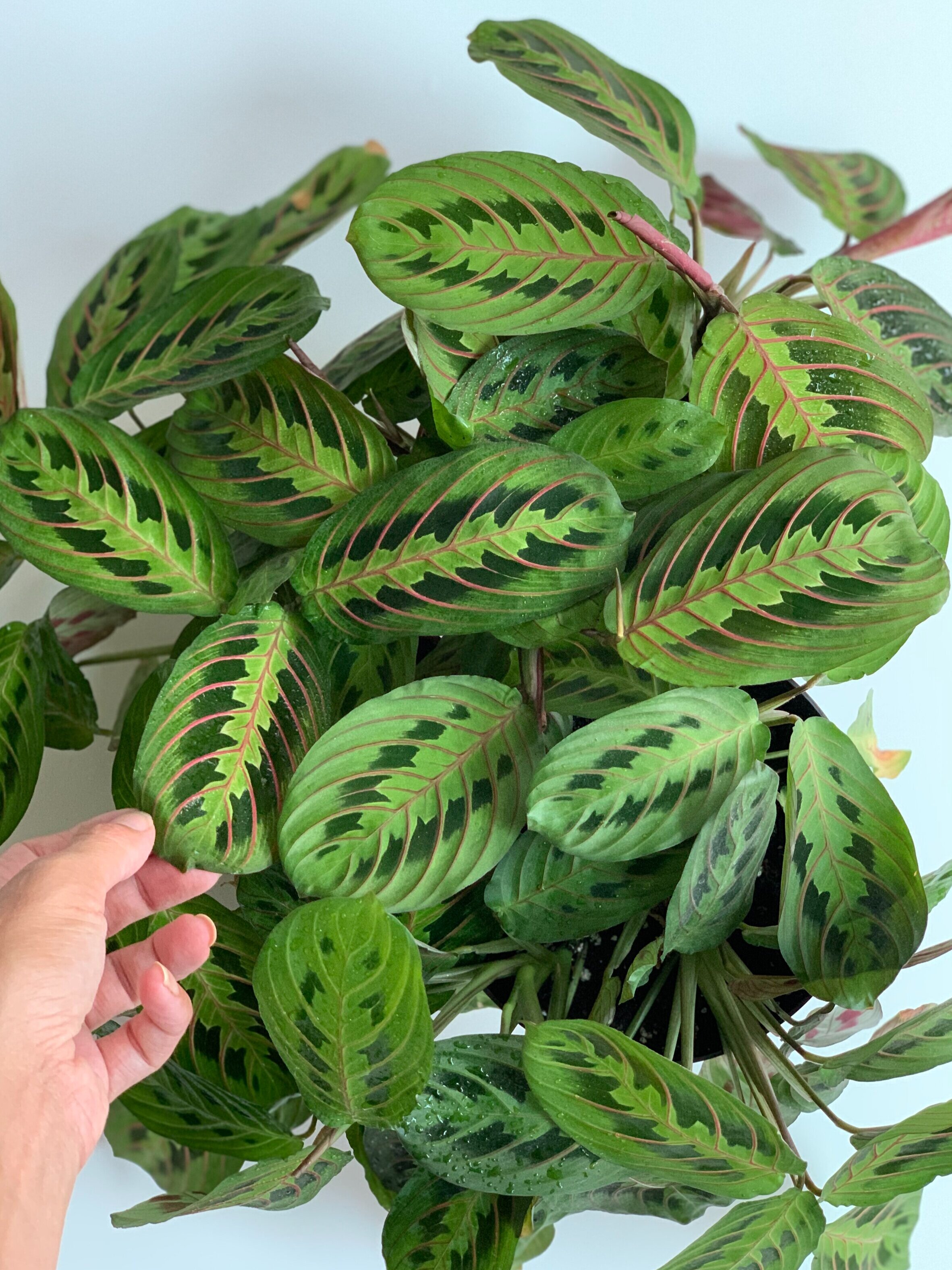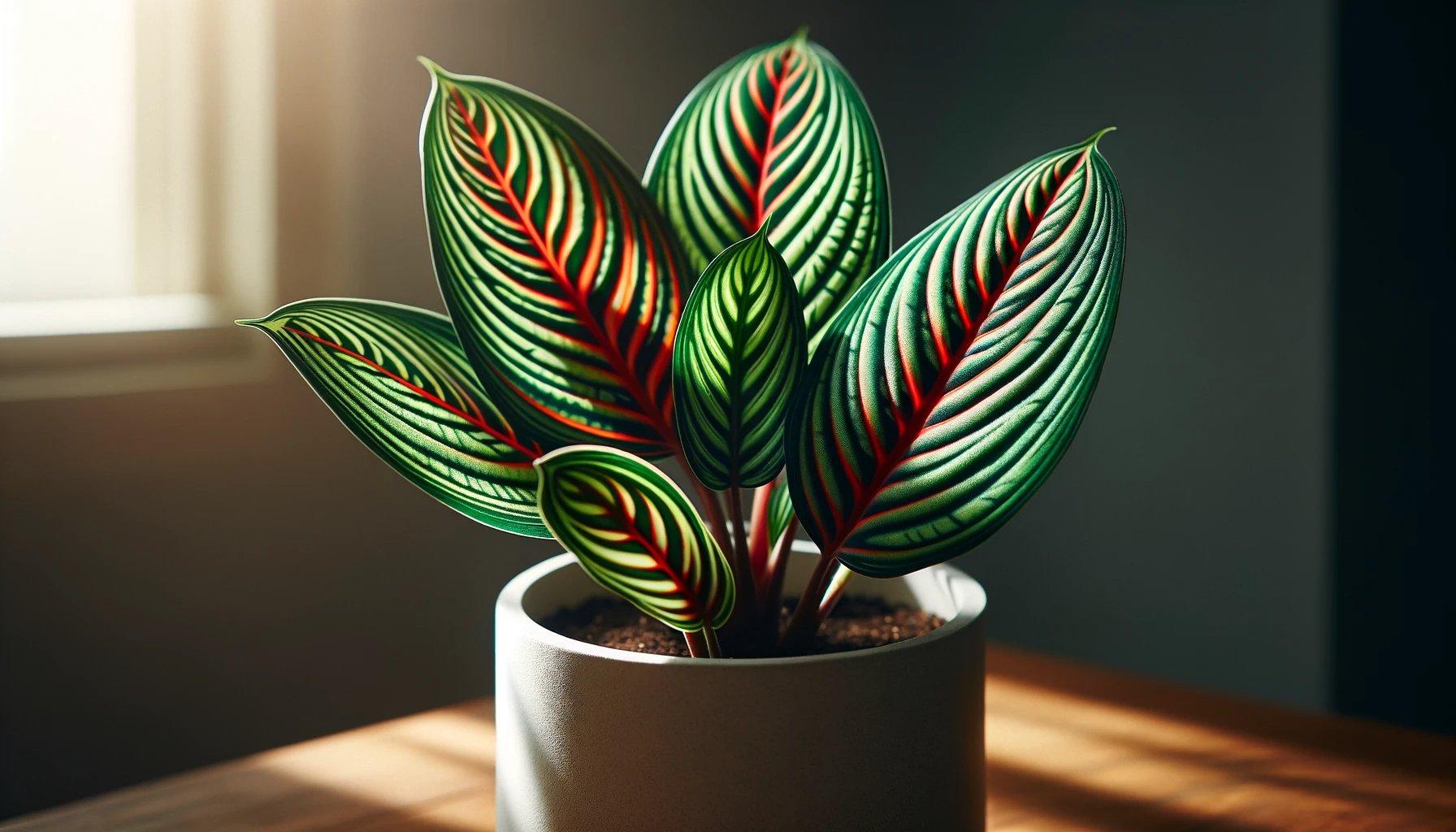:max_bytes(150000):strip_icc()/grow-maranta-inside-1902647-02-de777eb8e7804c3d86d658cd242583d6.jpg)
Maranta Plant
Maranta Plant: A Guide to Growing and Caring for this Unique Houseplant
Introduction
The Maranta plant, also known as the prayer plant, is a popular houseplant known for its striking foliage and unique behavior. With its vibrant colors and intricate patterns, the Maranta plant can add a touch of tropical flair to any indoor space. In this article, we will explore the characteristics of the Maranta plant, as well as provide tips on how to care for this exotic houseplant.
History and Origins
The Maranta plant is native to the tropical regions of Central and South America, where it thrives in warm and humid conditions. It belongs to the Marantaceae family, which includes other popular houseplants such as Calathea and Stromanthe. The Maranta plant gets its common name, the prayer plant, from its unique habit of folding its leaves upward in the evening, resembling hands in prayer.
Appearance and Characteristics
The Maranta plant is known for its striking foliage, which features intricate patterns and vibrant colors. The leaves are typically oval-shaped and can range in color from deep green to purple, with variegated patterns of stripes or spots. The undersides of the leaves are often a contrasting color, adding to the plant’s overall visual appeal.
Light Requirements

The Maranta plant thrives in bright, indirect light. It is important to avoid direct sunlight, as this can cause the leaves to burn and become damaged. Placing the plant near a window where it can receive filtered light is ideal for optimal growth.
Watering and Humidity
The Maranta plant requires consistently moist soil to thrive. It is important to water the plant when the top inch of soil feels dry to the touch, but be careful not to overwater, as this can lead to root rot. In addition to regular watering, the Maranta plant also benefits from increased humidity. Misting the leaves or placing a humidifier nearby can help create the ideal growing conditions for this tropical plant.
Temperature and Environment
The Maranta plant prefers warm temperatures between 65-75 degrees Fahrenheit. It is important to protect the plant from drafts and sudden temperature changes, as this can stress the plant and lead to leaf damage. Providing a consistent and warm environment will help the Maranta plant thrive.
Soil and Potting

The Maranta plant thrives in well-draining soil that is rich in organic matter. A mix of peat moss, perlite, and potting soil is ideal for this houseplant. When repotting, it is important to choose a pot with adequate drainage holes to prevent waterlogging and root rot.
Propagation
The Maranta plant can be propagated through division or stem cuttings. To propagate through division, carefully separate the rhizomes at the root base and replant in a new pot with fresh soil. To propagate through stem cuttings, simply cut a healthy stem with at least one node and place in water or soil to root.
Pests and Diseases
The Maranta plant is susceptible to common houseplant pests such as spider mites, aphids, and mealybugs. Regularly inspecting the plant for signs of pests and gently wiping the leaves with a damp cloth can help prevent infestations. In addition, overwatering can lead to root rot and fungal diseases, so it is important to maintain proper watering practices to keep the plant healthy.
Pruning and Maintenance
Regular pruning can help keep the Maranta plant looking tidy and encourage new growth. Remove any yellowing or damaged leaves, as well as any leggy stems. In addition, periodically dusting the leaves with a damp cloth can help keep the plant clean and free of debris.
Benefits of Growing a Maranta Plant
In addition to its striking appearance, the Maranta plant offers several benefits to indoor spaces. Its vibrant foliage can help purify the air and add a touch of nature to any room. The unique behavior of the leaves folding upward at night adds an element of intrigue and charm to this exotic houseplant.
Common Varieties of Maranta Plants
There are several popular varieties of Maranta plants, each with its own unique characteristics and colors. Some common varieties include Maranta leuconeura erythroneura, known for its bright red veins on green leaves, and Maranta leuconeura kerchoveana, with its striking silver markings on dark green leaves. These varieties can add variety and interest to any indoor plant collection.
FAQs
1. How often should I water my Maranta plant?
It is important to water your Maranta plant when the top inch of soil feels dry to the touch. Depending on the environment and season, this may range from once a week to every few days.
2. Why are the leaves of my Maranta plant turning yellow?
Yellowing leaves can be a sign of overwatering, underwatering, or nutrient deficiencies. Check the soil moisture and adjust your watering schedule accordingly. Ensure the plant is receiving adequate light and nutrients to support healthy growth.
3. How can I increase humidity for my Maranta plant?
To increase humidity for your Maranta plant, you can mist the leaves regularly, place a humidifier nearby, or create a pebble tray by placing a layer of pebbles in a shallow dish filled with water. As the water evaporates, it will increase the humidity around the plant.
Conclusion
In conclusion, the Maranta plant is a unique and beautiful houseplant that can add a touch of tropical elegance to any indoor space. By following the tips and guidelines provided in this article, you can successfully grow and care for your Maranta plant, enjoying its vibrant foliage and charming behavior for years to come. Whether you are a seasoned plant enthusiast or a beginner looking to add some greenery to your home, the Maranta plant is sure to delight and inspire with its exotic beauty.